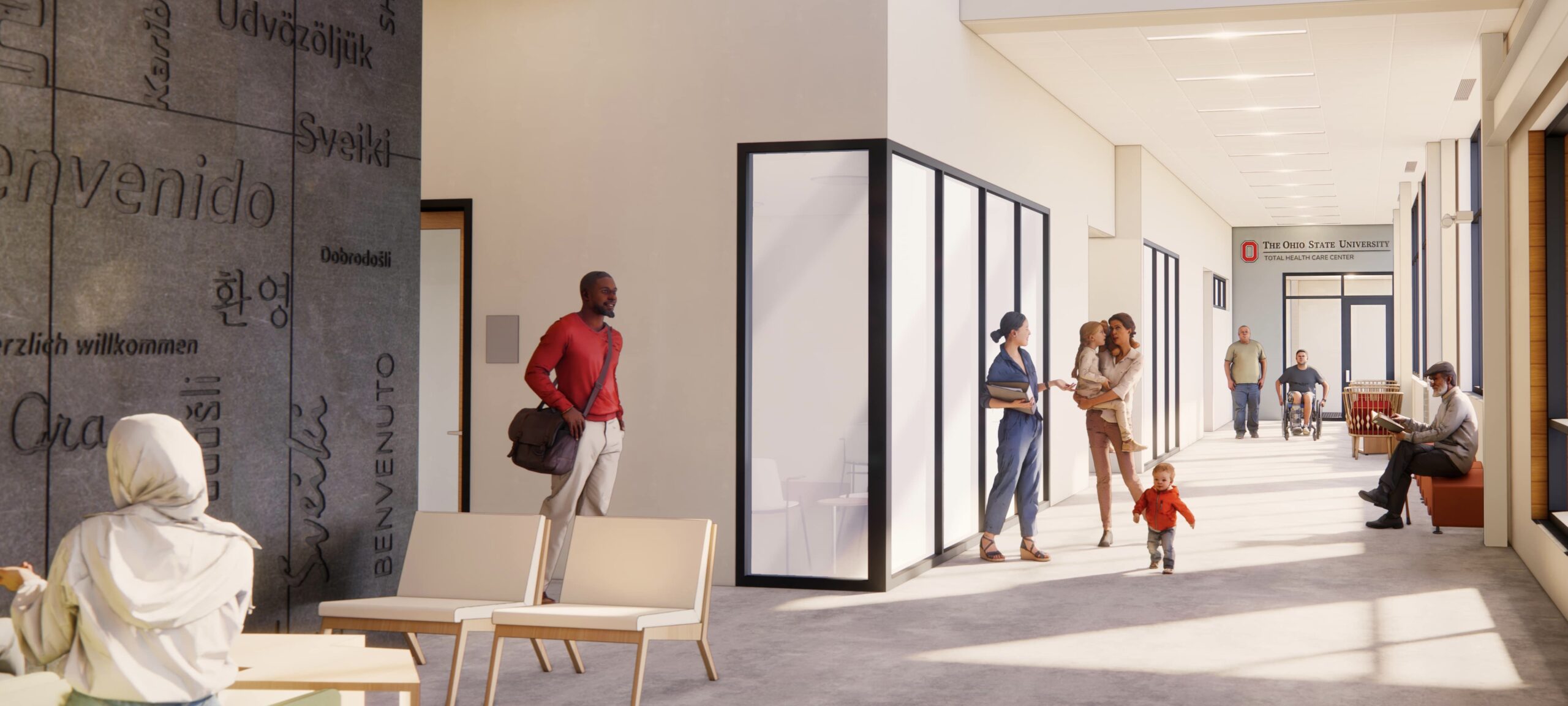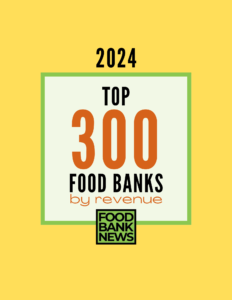Mid-Ohio Food Collective is no stranger to the community service model of food banking, which pairs a broad range of social services alongside food distribution. In fact, the food bank helped pioneer the concept with its Mid-Ohio Markets – eight of them so far – that combine free grocery markets with wraparound services.
The food bank’s latest effort in this area is its biggest and boldest yet. The Eastland Prosperity Center, expected to open next year, will be five times as large as any of the food bank’s current markets, with 20% of the 67,000-square-foot space devoted to medical and health services provided by Ohio State University. The $21-million center, funded with the help of all four levels of government, including ARPA dollars, will also permanently house a production kitchen, a WIC office, and a range of city and social services, in addition to the food bank’s own benefits outreach team.
The Eastland Prosperity Center is one of a growing number of food bank initiatives aimed at helping community members connect to social services whenever they pick up food, recognizing that food-insecure people often face a host of related financial and health issues. Feeding Tampa Bay, for example, opened its Causeway Center one year ago, joining Greater Cleveland Food Bank and its Community Resource Center.

Mid-Ohio’s Eastland Prosperity Center hopes to make its mark by generating so much community enthusiasm that any stigma around receiving food or social services is removed. The building (a former Kroger supermarket) will be transformed into a light-filled, welcoming hub of activity in an area that is currently vastly under-resourced. “We want to build a true sense of community around this space,” said Matt Habash, Mid-Ohio Food Collective’s President and CEO.
One way to build community is to involve the community. Mid-Ohio did that by inviting the community to name the center. And it is fortunate that a volunteer group has already stepped up to help operate food distribution at the new center. This group of volunteers has already been running a Mid-Ohio pop-up produce market at the site of the center. “They took it over very quickly,” Habash said. “We were ecstatic because they spoke the languages.” Mid-Ohio will train the community volunteers on how to run food distributions once they move inside the new building. “We think we’ll get a community based market run with a lot of volunteers from that community and leadership from the community,” he said. “It’s really a big win for us.”
The location of the Eastland Prosperity Center within a former strip mall is another plus. “Getting into strip centers makes sense for pantries, because it just de-stigmatizes everything,” Habash said. The location, combined with the planned high-end look and feel of the building and a check-in desk that will direct clients to any one of a number of services, is all designed to blunt stigma. “By the looks of the building and the way you’ll walk in, nobody will have any idea why you’re in that space,” Habash said. “It truly becomes a de-stigmatized space for people to come and get whatever service they need that we have available.”
The Eastland Prosperity Center is the latest prong in Mid-Ohio Food Collective’s effort to build capacity throughout its pantry network. The Mid-Ohio Market concept came about in the first place because the food bank was looking to get pantries “out of church basements,” Habash said, and into key locations. Currently, seven Mid-Ohio Markets that operate in a single county handle 35% of the volume in that county, which has 120 pantries in total. With the addition of a couple of top-tier pantries, “you have almost the 80/20 rule,” he said, where 20% of the agencies are doing 80% of the volume.
Looking forward, Habash hopes to see more of its 618 partner agencies do more to pool their resources together. Rather than staff a pantry for a few hours a week, for example, it might make more sense to reorient volunteers toward doing home deliveries for seniors. “I envision a much stronger but tighter network,” Habash said.
The Eastland Prosperity Center will follow the Mid-Ohio Market strategy of being open six days a week for forty hours, including some nights and Saturdays. As it does with all of its markets, the food bank will work with the community to determine the best hours, as well as any additional services.
With its Mid-Ohio Markets and now the Eastland Prosperity Center, the food bank is advancing its goal of better meeting the needs of its customers, rather than only acting as a distributor to its partner agencies. Habash highlighted the value of paying attention and listening during such expansions. “As you go into communities, work with the community. Understand what services are already there. How do we network and connect, as opposed to duplicate?” – Chris Costanzo
Like what you’re reading?
Support Food Bank News








